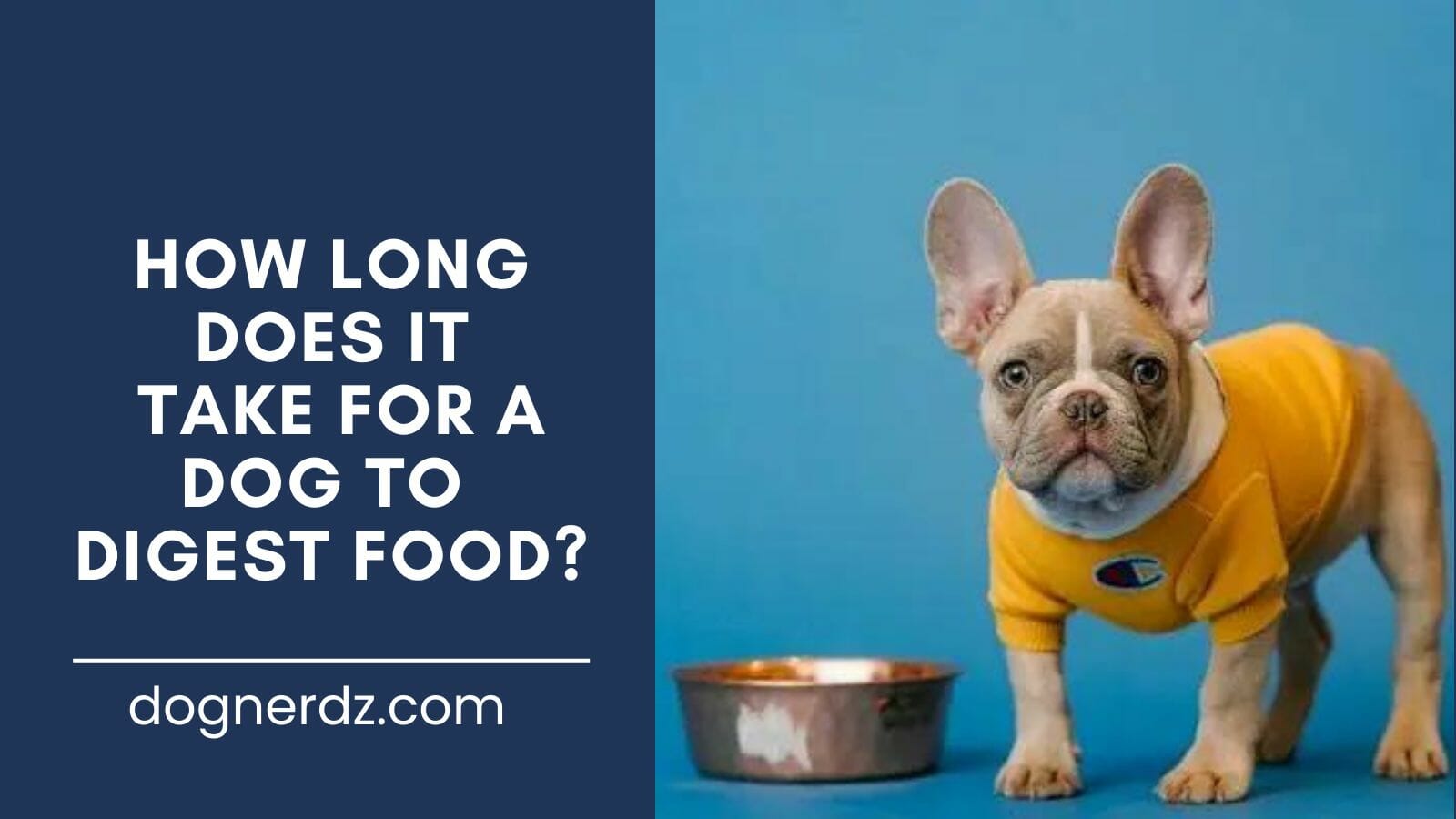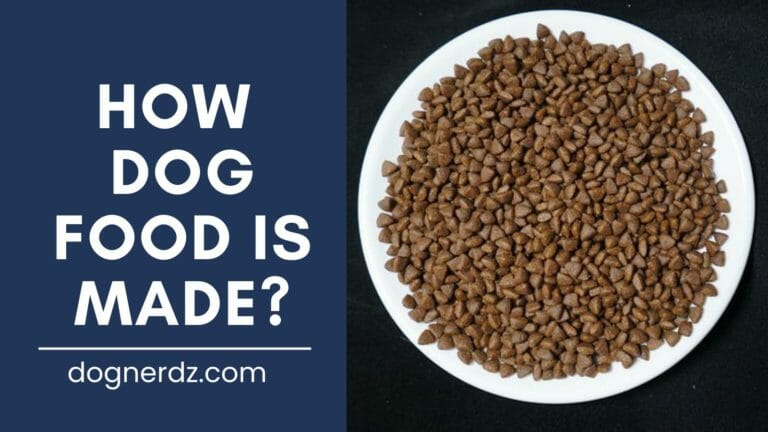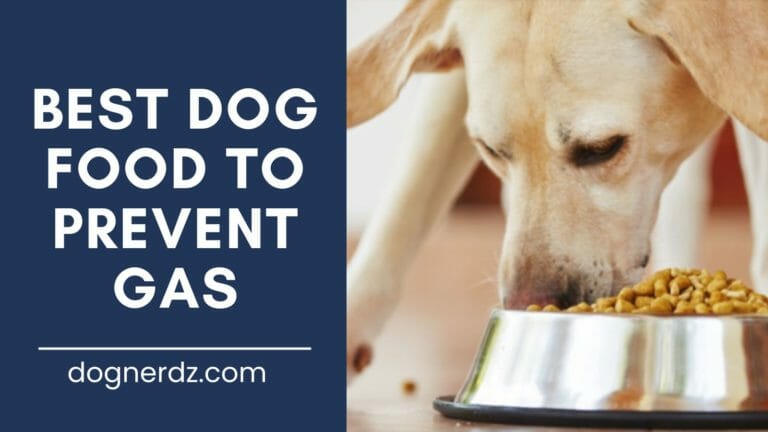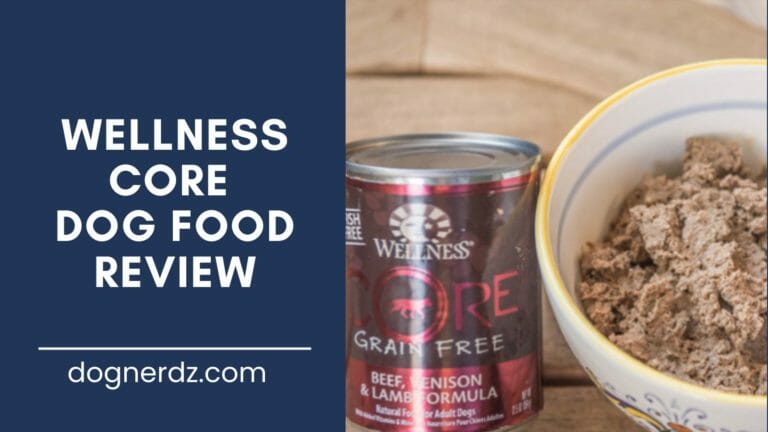How Long Does it Take for a Dog to Digest Food?
Table of Contents

Ever wonder why it takes Fluffy time to turn dinner into a bathroom break? You might think, “Ah, that’s doggy stuff, vets deal with that.” Nope! If you’re a pup’s best buddy, then how their tummy turns food into energy is your business too. One big clue to whether your furry friend feels like a champ or a chump is what their poop looks like. Yup, if something’s off with their digestion, it could mean trouble, like maybe they snacked on something nasty. Keeping an eye on your dog’s belly business isn’t just for the pros. It’s top-tier advice for any pooch parent. So, why should you care? Stick around, and you’ll find out how to keep your buddy’s tail wagging, healthy, and happy.
We’ll answer the question of how long does it take for a dog to digest food, why it’s important to know this, and also touch on the importance of understanding the dog digestive system in further detail.
Just How Long Does it Take for a Dog to Digest Food?

There is no way we can wait 8-10 hours between meals to exercise our dogs, so when is it safe to get moving again? 8-10 hours is a safe estimation, but for some breeds, it could take a dog up to 12 hours to fully digest a meal.
The short and concise answer to this question is anywhere between 8-10 hours. It is true that you cannot exercise your dog right after meals because it increases the chances of bloating and gas, which could result in a twisted stomach. We’ll dive into further detail about this issue later, but let’s address the plaguing question that must be on your mind after learning it will take hours before the food is processed.
For toys to small dogs, we wouldn’t suggest exercising or playing until at least 20-30 min after meals. For medium to large breeds, the time would extend to at least an hour.
The younger the dog, the less time it takes for the food to makes its way through their system. This is why we often have to take puppies for a potty break as little as just 5 minutes after meals and water. Coupled with the fact that puppies can’t hold their bowels very well, potty training for new pups is really dog owners’ worst nightmare.
A Dog’s Digestive Process
Let’s take a closer look at the intricate process of your dog’s digestive system. Do they process food the same way we do? Let’s find out!
The Mouth
Much like us, digestion for dogs starts in the mouth. Contrary to what most people think, the digestion process starts with chewing. When dog food enters your dog’s mouth, the process begins.
This is when your dog starts to break down the food into smaller pieces and gets it ready to pass through the esophagus to his stomach.
We Think You’ll Like: How Long Does Dog Food Last
The Esophagus
The esophagus in a dog performs the same function as ours. It is the second step to the dog digestion system and is the pathway between the mouth and the stomach. Not much breaking down of the food or water happens here, but if your dog ingests harmful objects, this is the first location where symptoms may present themselves.

For example, it’s never recommended for dog owners to feed their dog bones. These things can splinter and the sharp fragments will scrape and even pierce the esophagus. If this happens, your dog will be in a lot of pain. If you notice discomfort in your dog or an inability to eat or swallow, then take him to the vet right away.
Pet food is safe and free of penetrating objects, although we do recommend paying attention to the size of the kibble. If a small breed dog is fed large kibbles, it could affect their ability to digest the dog food. You need to take extra care when screening your dog’s snacks, as this is where dangerous items can make their way into his digestive system. A treat-filled bone, for example, should never be fed to your dog without your supervision.
Related: 10 Best Large Breed Dog Foods
The Stomach
This is the part of the dog digestion process where stomach acid breaks down the pet food. Much like ours, a dog’s stomach will produce digestive enzymes and acids to help aid digestion. If something your dog ate is difficult to digest or contains harmful chemicals, this is where the body will start to reject it.
You may see the symptoms manifest as a stomachache or vomiting in your dog. Sometimes all your dogs need to do is to get it out of his system. The expelling can happen from either end, but at this stage, it will most likely come up the esophagus and through the mouth. If vomiting is persistent and continues for more than a day, we would suggest a visit to the veterinarian.
The Intestines
The large and small intestines in your dog will then take the dog food and break it down further and absorb the necessary nutrients. This is the step that takes the longest. Usually, if the stomach allows harmful substances or spoiled food to pass on to this stage, the body will eject it through the colon and come out as diarrhea.
The Colon
The colon is where the food stays to become a fecal matter or dog poop. Here it sits and waits to be released in a few hours. An important indicator of your dog’s health is the state of his poop. We would suggest inspecting the fecal matter every time he goes, especially if you notice your dog isn’t feeling too well.
You don’t have to go fingers deep with gloves, but sometimes a simple glance at the consistency can speak volumes. Healthy poop should be firm, different shades of brown, and shouldn’t consist of foreign objects. If your dog ingested a solid item and you want to be sure it has passed through his system, then you would need to go hands-in and sift through the waste.
All in all, the entire process from the mouth to colon will take 8-10 hours on average. However, many tiny teacup dogs will experience full digestion in just around 4 hours. The larger the dog, the longer it takes. Let’s take a closer look at what other factors can impact the dog digestive system.
We Think You’ll Like: How Long Can a Dog Go Without Pooping?
What Affects My Dog’s Digestion?
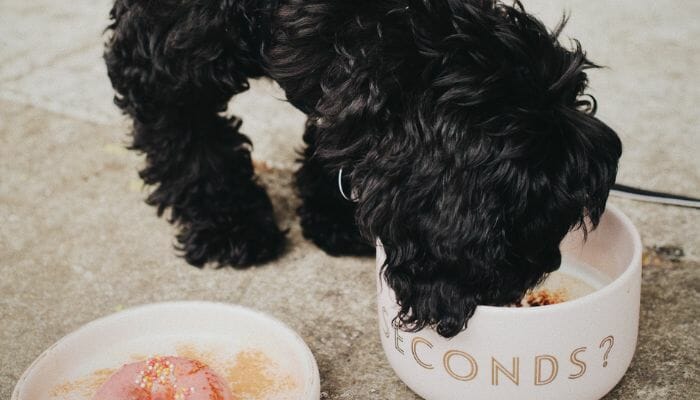
Like we briefly mentioned, the size of your dog will influence how long it takes for your dog to digest food. The tiniest Chihuahua will need much less time to digest meals compared to a hulking Mastiff.
The breed also matters, and it goes hand-in-hand with the size of your dog. Some dogs are known for poorer digestive systems just as some are known for respiratory issues. Check to see if your specific breed is prone to stomach and intestinal issues. For example, Golden Retrievers and Great Danes are known for gastrointestinal disorders.
The food they eat and the amount of nutrition they absorb will also affect the dog digestive system. For example, a pooch with more fiber in his diet will have an easier time processing poop than one that lacks the proper amount. Different food will also require varying lengths of time to process.
A nutrient-rich meal will move its way through the dog digestive system much quicker than one chalked full of fillers and byproducts. Don’t worry, there are actions you can take to supplement your dog’s diet to ensure healthy digestion, but more on that later.
How much exercise your dog gets will also impact his digestive system. The more exercise they get, the faster it takes a dog to digest his food. This is because the body needs to keep up with the amount of energy expended, which will speed up digestion. If you and your dog live a very active lifestyle, then we suggest keeping a close eye on the caloric intake and output to make sure your dog isn’t operating on a deficit.
Lastly, there is the question of age. Senior dogs tend to slow down not only in movement and energy levels but digestion as well. Conversely, newborns and young pups have everything moving at a fast pace, which also requires them to go potty more frequently. Don’t be surprised if it takes your aging dog longer to go and the potty breaks decrease just as you shouldn’t be alarmed if your puppy needs to go 3 times an hour.
We Think You’ll Like: 10 Best Indoor Dog Potty
Promoting Healthy Digestion for Your Dog
Some dogs may inherit stomach and digestive system issues from their parents, and others can develop them due to a poor diet. As dog owners, it’s our job to make sure we are doing the best we can for our dog. Luckily, there are some steps we can take to guarantee a healthier digestive system for your pooch. It isn’t just choosing a higher quality brand of dog food, it’s also supplements and what you DON’T feed.
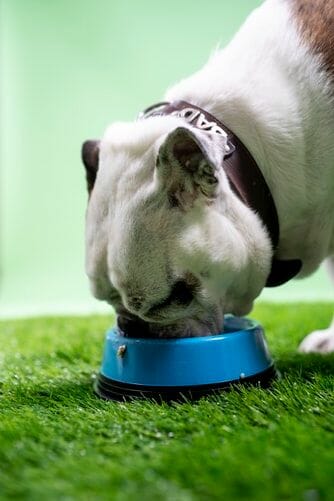
We will preface this by saying to always consult with your trusted vet before attempting to switch up your dog’s diet or give your dogs new vitamins and treats. Due to each dog’s unique physiology, what works for one may not be the best option for another.
To promote the health of your dog’s gi tract, we suggest probiotic supplements, but traces of probiotics can also be found in certain kibble. Less is more in terms of supplements, but what’s better is the right amount. Flooding your dog’s digestive system with an overdose of vitamins could overwork it and lead to bowel issues and runny stools.
There are targeted dog supplements on the market, but for balanced protection, we suggest looking for an all-in-one product. These options will boost your dog’s health entirely with amounts of vitamins, minerals, joint health support, digestion support, and more. The supplements of your choice should be easy to absorb and digest within your dog’s system.
What Happens with Poor Digestion in Your Dog?
Some of you may wonder what the drawbacks are to chronic indigestion in a dog. It’s okay if your dog takes a while to process the food, but how long does it take for it to be considered indigestion? If your dog hasn’t gone to the bathroom in a day, there shouldn’t be alarm bells just yet, but you should be on alert. If it lasts more than 2 or 3 days, then definitely take a trip to the vet.
Undigestible dog food or human food you feed to your dog can build up in his system and cause a blockage. You never want this to happen because it will require surgery to remove. Chronic dog digestion issues could signify a more serious underlying condition such as colitis. In these cases, a visit to the vet is necessary.
What Food Should My Dog Eat to Help His Digestive System?
To make sure it doesn’t take long for your dog to digest food, you have to weigh out the nutritional value of his meals. What is considered highly digestible dog food and what should we avoid? Let’s take a look.
Fresh whole foods are the best for dogs. Read the label on your pet food before purchasing. The first few ingredients should be clearly labeled protein ingredients from named sources. You shouldn’t be feeding your dog filler-filled foods and ones full of byproducts. When carbs or starch is used as the first ingredient, that is an indicator of a poor nutritional diet.

In general, fish and poultry are the most digestible protein sources that offer complete nutrition. They are followed by lamb, pork, and beef. Even if the first ingredients are from clear sources, make sure to avoid the word “meal”. Beef is meat from cows while the beef meal is made up of the leftovers found in the slaughterhouse consisting of organs, hooves, and cartilage. It’s okay to have protein meals included somewhere later on the list, but it shouldn’t be the primary source of protein.
You should steer clear of processed foods as much as possible and ones that contain artificial ingredients and preservatives. When food has low digestibility such as processed foods, it will take longer for a dog to digest food.
Raw food is a contentious subject and one that is still hotly debated among experts, breeders, vets, and pet owners alike. For this reason, we suggest consulting with your vet who is familiar with your dog’s nutritional needs.
Another new trend that seems to be here to stay is fresh food.
It’s just like feeding your dog home-cooked meals every day. With the fresh ingredients, your dog gets minimally processed meals each day. That’s not to say kibble is bad, as kibbles are also created with balanced nutrition to meet a dog’s needs. The only difference is kibbles go through more processing than fresh food.
Frequently Asked Questions
How long does it take for a dog to digest food and poop it out?
It takes about 6 to 10 hours on average for a dog to digest food and poop it out. This time frame depends on the breed, size of the dog, activity level, and age among other things. The process is faster in dogs than in humans. Digestion starts in the mouth, right when your dog starts chewing. The food then makes its way through the esophagus to the stomach for processing with acids and enzymes, then to the intestines for nutrient absorption, and then it becomes waste and is stored in the colon ready for release.
How long does food stay in a dog’s stomach?
The food stays in a dog’s stomach for an average of a few hours. It will take a dog 6 to 10 hours and sometimes more depending on the breed to fully process the food through his digestive system. Typically it will take this amount of time for the brain to trigger a hunger response in the dog.
How long should I wait before exercising my dog after meals?
How long does it take a dog to digest before you can take him out will depend on the dog food he ate, the breed, and the age of your pet. Toys to small breeds don’t need a long time, just a short break of at least 10-30 minutes will do. However, the larger the dog the longer the wait time.
For medium to large breeds, the time will extend to 30 minutes to an hour and for the giant breeds, they need to wait longer – anywhere up to 2 hours. The longer wait time as the dog gets bigger in size is due to the increased risk of stomach twisting, which can be fatal.
Conclusion
How long it takes a dog to digest food will depend on his age, size, breed, and the food he eats. The dog’s digestive system is similar to ours in terms of the process. Interestingly, what’s required to maintain a dog’s gut health is also similar to ours. The key is to feed your pet a balanced meal that is nutritionally dense and to supplement his diet with the right vitamins and minerals. Steer clear of artificial ingredients, over-processed food, additives, and preservatives.
Expert Tip
If your dog ate something harmful or ingested a foreign object, a good way to allow a quick passthrough is to exercise him more. The more frequently you exercise your dog, the more his body will need to digest and process food for nutrients to sustain his energy output.
Did You Know?
Fiber can help to firm up loose stools and to aid in digestion. An excellent source of high fiber is pumpkin. Vets, breeders, and other dog owners swear by canned pumpkins when dogs have digestive issues. You may also check some dog food for firm stools.

